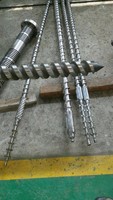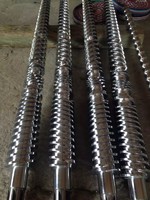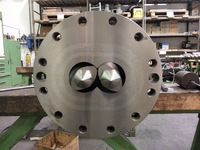Hi-quality screw and barrel for Injection molding machine
Product Quick Detail
- FOB Price
- USD $100.00 / Piece
- Minimum Order
- 1
- Place Of Origin
- Ningbo
- Packaging
- wooden case
- Delivery
- 15 Days
Specifications
More info pls find kaylee(at)tizatech.com , our web is www*tizatech*com
More detail specification please contact us for catalogue
Single Screw ExtrusionExtrusion is a technology to convey materials which dates back far before the plastic era. It has been in use in the ceramics industry for ages. When we also include screws to transport water,the technology is thousands of years old.
For plastic processing, extrusion has been used from the start. First to convey PVC and polyethylene, later also for engineering plastics. However, screw modifications become necessary.
The length of a screw is expressed as theratio between diameter and length. For a 21 D screw with a diameter 3 cm, theactive length is thus 63 cm. Since the emergence of crystalline engineering plastics, the length of the screws had to be increased. A screw length of 24 D is quite common. The geometry of screws can be varied.Widely used for extrusion applications are 3-zone screws and barrier screws.
3-zone screws consist of 3 zones: Feed Zone, Compression Zone, Metering Zone
The feed section is the part of the screw where the unmolten polymer enters into the barrel. The rotating screw moves the material along the heated barrel where it starts to melt.
In the compression zone, gases like air and volatiles like moisture, are being removed. In the compression zone, the flight depth decreases and gases are pushed back into the direction of the hopper.
Finally, the material enters the metering section. In this section, pressure is generated which enables the material to be conveyed into the shaping area, like feed block or film die.
The compression ratio of the screw is the ratio between the flight depth of the feed section and the ratio of themetering section.
Most screws have a flight helix that is equal to the diameter of the screw.
- Country: China (Mainland)
- Business Type: Ningbo Tianze Machinery Technology Co.,
- Market: worldwide
- Founded Year: 1988
- Address: No555 Juxian Road
- Contact: kaylee cai











